Crested Gecko Facts
Scientific name: Correlophus ciliatus
Size: Approx 8 Inches
Lifespan: 20 years
Wild Population: 4,000+
Primary Colour: Various
Endangerment: Was thought to be extinct until rediscovered
Habitat: New Caledonia
Difficulty of Keeping: Easy
Optimum environment Temperature: 82°F hotspot with ambient temp of 78°F
What do they eat? Crickets, Waxworms, Vegetables, Fruits.
Eggs or Live birth: Egg baring lizard.
Venomous: None venomous/ None poisonous
Are they kept in captivity? Crested geckos are rapidly increasing as a pet in captivity, low maintaince and friendly pet lizard.
Ease of keeping as a pet: among the easiest snake lizard to keep in captivity.
Cost: Ranges between £30 – £500 dependant on morph (colour)
About the crested gecko
Crested geckos were once thought to be extinct.
Rediscovered around 1994. Since then their popularity as pets has dramatically increased.
They’re low maintenance pet lizards and are well-suited for children or new lizard keepers.
Crested geckos also known as the “eyelash” gecko gets it name from the skin projections that start from the eye and go all the way down the back of the lizard.
They are an arboreal lizard which spends 90% of its life within the trees, looking for bugs and insects to eat.
Cresties do not eat rodents or any mammal, their diet consists of mainly crickets and other bugs.
In captivity, you can feed your gecko repashy pots, these are like little jellies with essential nutrients packed in. Mealworms are also another great option for cresties. (A full list of foods options is below).
They love to jump, in the wild will jump between branches and trees, when handling a crested gecko be prepared for the little lizard to occasionally jump from time to time.
Sticky pads, yes, they have sticky feet but are they sticky?
No, they are just thousands are micro sized hairs that create a sticky effect and allows them to climb vertically or even upside down.
Crested Gecko as a pet
These lizards are always growing in popularity, with the beautiful appearance and ease of care, crested geckos make for one of, if not the best pet lizard to keep.
The bearded dragon is highly regarded as the #1 pet lizard, but we think crested geckos are better suited around people’s lifestyles because of their low maintenance.
The highest costs are getting the initial setup, and this is often more than the animal itself, because cresties do not grow big they can live in the same terrarium throughout their entire life.
Lifespan
Like most reptiles, cresties live a very long life. In the wild 12 – 15 years is the average due to predators and injuries left unseen to. Whereas in captivity because their environment is kept clean and fed on a regular basis it is not uncommon to reach the age of 20+ years.
Because of this, it is important to consider if keeping a crested gecko for around 20 years is going to fit into your lifestyle. They are not the most demanding pet lizard to keep but it is a marathon.
What to feed a crested gecko
It is important to ensure the diet of your crested gecko is balanced.
One item that is recommended for every owner is repashy powder, this is an additive that is put on the insects and bugs that are fed.
This powder increases the protein and essential vitamins that your gecko consumes.
Fruits
- Apricots
- Apples
- Black Currants
- Blueberries
- Cherries
- Grapes
- Mango
- Kiwi
- Pears
- Orange
- Pineapple
- Raspberries
- Watermelon
- Strawberries
Vegetables
- Collard Greens
- Alfalfa
- Endive
- Dandelion Leaves
- Watercress
- Mustard Greens
Live food
- Crickets
- Waxworms
- Meal worms
- Dubia Roaches
To optimize the nutrients from live insects, gut-loading is the best way of doing this.
Whilst the bugs are waiting to be fed to the gecko, feed the crickets on vegetables or fruits that can be offered to the lizard, this will also be absorbed when eaten, adding to the diet.
How often should you be feeding?
2 – 3 times weekly is a good schedule to stick to, having 1-2 crickets for example each meal.
Always remove any crickets or worms from the caging if they are uneaten.
Repashy gel pots can be left in the cage for up to 3 – 5 days before replacing.
If your gecko goes off food, this is normal around the time of shedding.
What you will need for a Crested Gecko
- Glass Vivarium
- Thermostat
- Spray bottle
- Substrate/ bedding
- Heat Bulb
- Water dish
- Decoration
Starter kits for geckos are readily available from most local pet shops or online.
It is often cheaper to get them individually as this also allows you to ensure you are getting everything that is needed.
Certain items are optional such as decoration and how much you include.
Whereas others are mandatory such as the thermostat, heating and water dish.
Vivarium
We have not included a wooden option as they do not last as long, this due to the frequency of spraying inside the cage will warp the wood.
A 2ft wide 2ft high vivarium will be perfect to house 1 adult crested gecko.
Glass also keeps the humidity inside the housing better than any other, also giving complete view into cage.
Thermostat and Heating
A thermostat is often overlooked by new keepers, in my opinion this is the most important piece equipment when keeping any reptile.
There are various types of thermostat, for a crested gecko a dimming stat is what is needed to correctly regulate the temperature.
Others are mat stats, these are primarily used for floor heat mats, but when used with a bulb will cause them to work for a shorter time before needing replacement.
Temperatures & Humidity
Keeping a healthy gecko in captivity is massively determined by getting the temps and humidity to as near their natural habitat as possible. This is easy to do with the aid of a thermostat, hydrometer and 2 thermometers.
Places 1 thermometer on each side of the terrarium and the hydrometer stuck in the direct centre. Doing this will give you the more accurate recordings of their enclosure. Thermostat placement is essential, I should be in a stable place which it cannot be covered of moved, you can tape it to hold the probe in place.
The tempreature should be set to average 75 degrees F, the hot side should not exceed 82 F as this will cause stress for your gecko.
- Humidity 70%
Sticking to these as close as possible will allowed your gecko to thrive, once dialled in you will not need to do anything further other than replace bulbs and the occasional fuse in the thermostat.
Humidity needs to be relatively high within the vivarium, simply spray with water 2 – 6 times depending on how dry your location is.
The bedding choice will aid in maintaining high humidity consistently.
Spray bottle/ Water dish
The water bowl for a crested gecko does not need to be deep as they do not swim.
This must be changed daily, giving access to fresh water always is important.
The spray bottle only needs filling with tap water and not additives, spraying down the cage each day to increase the humidity of the enclosure will aid the shedding process and keep the gecko’s skin healthy.
Best Substrates
When it comes to bedding there are some key requirements the substrate must have, the caging is going to be sprayed with water daily so beddings such as aspen or beech chip are not suitable. As they are drying when sprayed mould will begin to appear and cause health issues for your gecko.
The best option is cypress mulch, this is naturally damp and can hold water without becoming mouldy, the dampness also aids the humidity levels in the cage and because cypress mulch absorbs water, it will stay humid for longer periods of time.
Decoration
This where you can let your creative juices flow!
As cresties love to climb, any branches or elevated swings would be welcomed by your pet gecko.
I always include at least one area that is off the ground and they can get inside to feel secure.
An empty coconut with string attached to the roof is perfect.
Handling your crested gecko
Handling is very easy providing you are gentle and do not grab at the animal.
They will happily sit with you for hours on your shoulder, but make sure your gecko is still there, they have a habit of disappearing.
A crested gecko has an unusual defence when threatened, they will drop their tail and try to escape.
Once the tail has been dropped, it will not grow back, this will not hinder their health or wellbeing.
They love to jump from time to time, so be prepared.
If you have not seen the video on YouTube of the gecko jumping at the presenter, it shows just how randomly a gecko can decide they are going to jump! (link to the video here).
If you are still unsure if a crested gecko is right for you, see our guides on other lizards for inspiration or have a quick look at a leopard gecko.
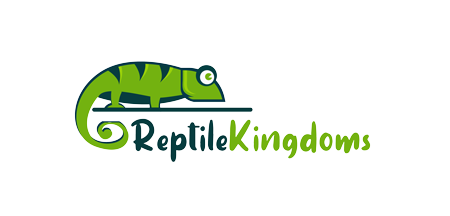
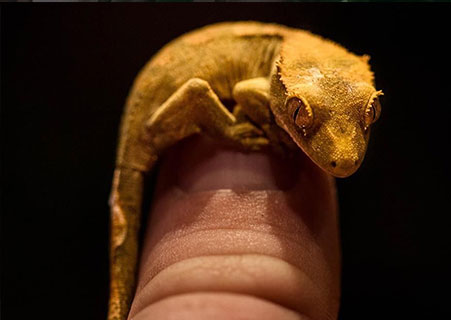
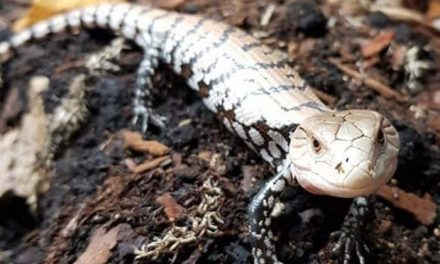
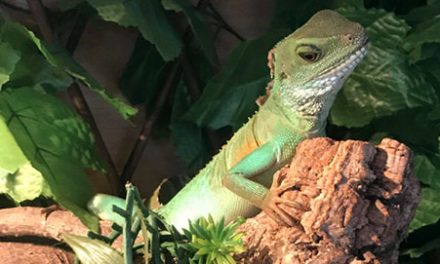

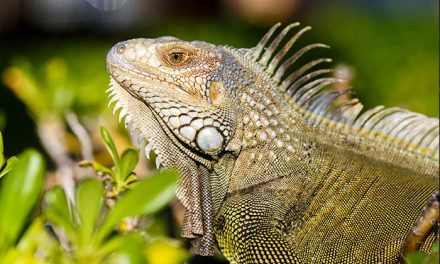

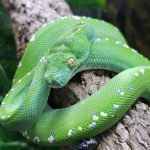
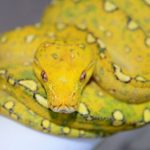
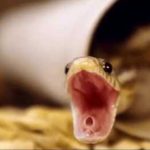
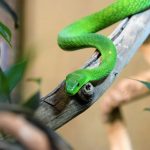
0 Comments